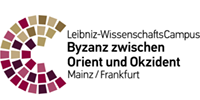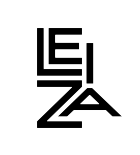The Greek Treatise 'On the Highly Appreciated and Famous Art of the Goldsmith' - Edition and Interdisciplinary Commentary
This project’s topic is the study of an anonymously written Byzantine-Greek treatise with 69 recipes on gold- and silversmithing, part of which are commented on. The text of the treatise has been passed down through a manuscript written at Chandax on Crete in 1478, which is today in Paris (Bibliothèque Nationale, Codex Parisinus graecus 2327). Its prototype is as yet unknown, but this is a text which is based – at least in parts – on an 11th-century or even earlier text.
This treatise is of great importance for the field of Byzantine Studies since it is hitherto the only known treatise on goldsmithing from Byzantium. It probably pre-dates the often quoted Latin treatise by Theophilus Presbyter written in the 12th century, and it mentions some techniques for the first time or as the only text, e.g. the production of enamel and niello which play a major role in Byzantine goldsmiths’ works. This ‘recipe book’ is of utmost importance for the study of Byzantine everyday-life, and particularly for research into crafts and trades.
The text of the treatise was first published with a French tranlsation at the end of the 19th century, but hardly caught researchers’ attention until 2004, when Jochem Wolters translated it from French to German, with the addition of comments from the goldsmith’s point of view. Until today, these translations represent the current state of research. However, they are in urgent need of revision because they are either antiquated or lacking philological expertise.
The aim of this project is a revised and commented edition with a new translation into German, as well as an interdisciplinary treatment from the perspective of philology and history, art history, materials science and gold-/silversmithing. A special emphasis is placed upon the terminology of the craft of gold- and silversmithing. Furthermore, the recipes will be compared with contemporary Byzantine gold- and silversmiths’ artworks regarding their materials and techniques. A unique feature of this project is the involvement of experimental archaeology to verify the theoretical findings. The recipes of the treatise are in the process of being tested in the Laboratory for Experimental Archaeology in Mayen (LEA), the restoration workshops of the RGZM and the laboratories of the Johannes Gutenberg University.
An important focus of the project is on the question of cultural exchange on the basis of written sources and objects, for example, with regard to the above mentioned treatise of Theophilus Presbyther (12th century). This Latin text is the most important and elaborate medieval treatise which has been often quoted, also by researchers in the field of Byzantine arts-and-crafts. The comparison of both treatises can reveal new insights into the intercultural transfer of technical and scientific knowledge. In this context, we will also investigate older textual traditions and study the common roots of medieval technical treatises in the Byzantine Empire, the Latin West and the Balkans.
The topic of the project has already been treated within a seminar for advanced students at Mainz University in 2013/14, given by members of the project group. Furthermore, the project is incorporated into university teaching with seminars such as ‘Reading Greek Sources: The Byzantine Treatise on Goldsmithing’ (2015/16) and the regular lecture series ‘Decorative Techniques’. Several students are regular members of the project team which meets every six weeks to discuss the translation of the recipes. The research also generates exam theses, for example a master thesis on niello production at Mainz University’s institute for Geo Sciences.
Publications
- A. Bosselmann-Ruickbie u.a., Das Forschungsprojekt zum Goldschmiedetraktat „Über die hochgeschätzte und berühmte Goldschmiedekunst“. In: A. Bosselmann-Ruickbie u.a. (eds), Byzanz am Rhein. Festschrift für Günter Prinzing anlässlich seines 80. Geburtstags (Mainzer Veröffentlichungen zur Byzantinistik 18) (Wiesbaden 2024) 251-260.
- S. de Zilva / J. Engelmann, Byzantinisches Rezept "Über die Verfertigung einer Verleimung für Töpfe und Röhren für ein Bad" Experimentelle Archäologie in Europa. Jahrbuch 2020, Heft 19. S. 113-124.
- E. Hanning / S. Greiff / G. Prinzing / A. Bosselmann-Ruickbie, Rezepte für byzantinische Goldschmiede, in: Archäologie in Deutschland 2 (2020) 38-39.
- A. Bosselmann-Ruickbie/ S. Greiff: Spektakulär: Der Preslav-Schatz, in: DAMALS. Das Magazin für Geschichte 1 (2019) 45-46.
- A. Bosselmann-Ruickbie/ S. Greiff: The 10th-century Preslav Jewellery Treasure from Bulgaria under Investigation, in: Jewellery History Today 34 (2019) 3-5.
- M. Aubin, M. Heinzel, A. Bosselmann-Ruickbie, S. Greiff The Preslav treasure - Insight into the Byzantine enamelling techniques" ENAMEL 2018, Vol. 1: Extended Abstracts, Stuttgart, June 7-9 (2018) 20-25.
- A. Bosselmann-Ruickbie, Contact between Byzantium and the West from the 9th to the 15th Century: Reflections in Goldsmiths' Works and Enamels, in: F. Daim / D. Heher / C. Rapp (Hrsg.), Menschen, Bilder, Sprache, Dinge. Wege der Kommunikation zwischen Byzanz und dem Westen 1: Bilder und Dinge, BOO 9,1 (Mainz 2018) 73-104.
- A. Bosselmann-Ruickbie/ S. Greiff: Hochzeitsschmuck einer byzantinischen Prinzessin? Der Preslav-Schatz aus Bulgarien, in: Antike Welt. Zeitschrift für Archäologie und Kulturgeschichte 4 (2018) 24-26.
- A. Bosselmann-Ruickbie /S. Greiff/ M. Aubin/ M. Heinzel : Le trésor de Preslav en Bulgarie: un projet de recherche centré sur un trésor médiéval, in: Le trésor de Preslav, Ausstellungskatalog Musée du Louvre, hg. von J. Durand (2018) 64-67.
- A. Bosselmann-Ruickbie / S. Greiff, Rosinen in der Messingherstellung und andere Kuriositäten Byzantinischer Goldschmiederezepte: Interdisziplinäre Forschungen zu einem byzantinischen Goldschmiedetraktat, in: Antike Welt 4 (2018) 27-30.
- A. Bosselmann-Ruickbie / S. Greiff / G. Prinzing, »Über die hochgeschätzte und berühmte Goldschmiedekunst«, in: Schallaburg Kunstbetriebsges.m.b.H. (Hrsg.) Ausstellungskatalog Byzanz und der Westen (2018) 231.
- G. Prinzing, Streiflichter auf Goldschmiede im Byzanz der mittelbyzantinischen Zeit. In: J. Drauschke/ E. Kislinger/ K. Kühtreiber/ T. Kühtreiber/ G. Scharrer-Liška/ T. Vida (Hrsg.), Lebenswelten zwischen Archäologie und Geschichte. Festschrift für Falko Daim zu seinem 65. Geburtstag. Teil 2. (2018) 763-772.
- St. Patscher / S. de Zilva, Der byzantinische Traktat »Über die hochgeschätzte und berühmte Goldschmiedekunst« - Neuedition, Übersetzung und interdisziplinärer Kommentar. Das Projekt und erste Ergebnisse der experimentellen Evaluierung, in: Experimentelle Archäologie in Europa 16 (2017) 136-147.
Team
- PD Dr. habil. Stefan Albrecht
- Sayuri de Zilva
- Erica Hanning
- Dr. Michael Herdick
- Heidrun Hochgesand
- Stephan Patscher
- Carolin Koch
- Matthias Heinzel
- Vasiliki Papadopoulou
- Josef Engelmann
Partners
Dr. Matteo Martelli, Berlin-Brandenburgische Akademie der Wissenschaften (Zentrum Grundlagenforschung Alte Welt. Projekt: Galen als Vermittler, Interpret und Vollender der antiken Medizin)
Dr. Gerasimos Merianos, Institute of Historical Research National Hellenic Research Foundation, Athen








![[Translate to Englisch:] [Translate to Englisch:]](/fileadmin/_processed_/2/b/csm_Griechisches_TraktatOuroboros_Par-gr-2327_800px_5e7f50f981.jpg)
![[Translate to Englisch:] [Translate to Englisch:]](/fileadmin/_processed_/2/a/csm_Griechisches_Traktat_Par_gr_2327_800px_2d44c828a7.jpg)




